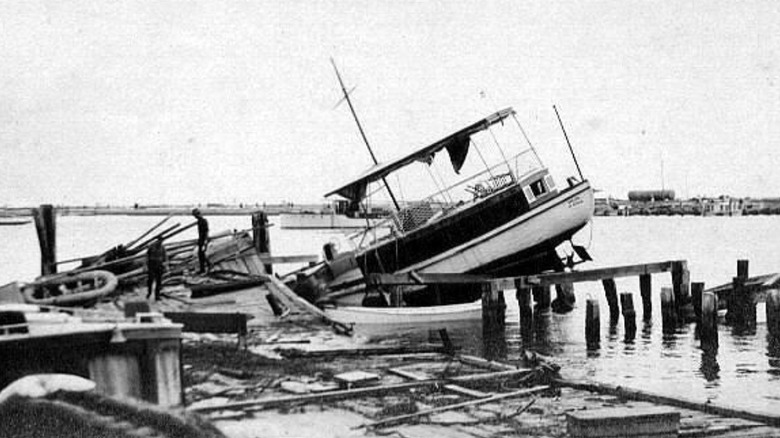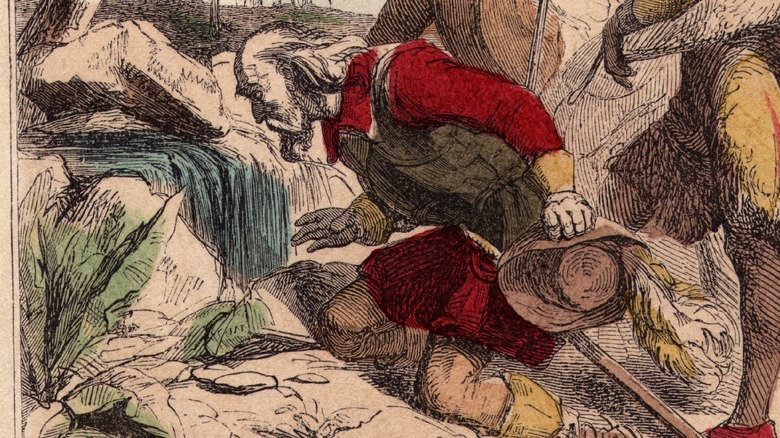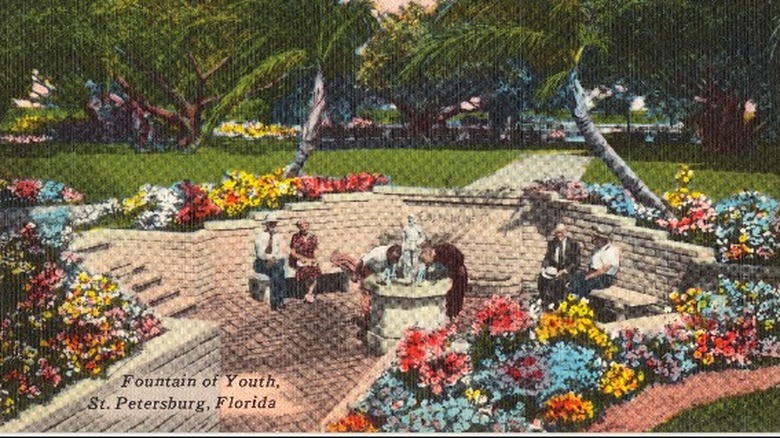The Story Of The Eccentric Waterside Attraction Destroyed In The 1921 Tampa Hurricane
On October 25, 1921, a major hurricane walloped Tampa Bay in Florida. The storm had a devastating impact, inundating the area with an 11-foot storm surge, according to the National Weather Service. Structures and boats were destroyed along the beach from Pasco County to southwestern Florida. The storm, which would have been a Category 3 hurricane by today's standards, heaved steamships out of the water, destroyed power lines and railroad tracks, and plucked the year's crop of oranges and grapefruits off their trees, according to The St. Pete Catalyst. One of the communities in its path was St. Petersburg, which lost ships, docks, and several downtown buildings, including a Waterfront Park bandstand, according to Bay News 9. And it lost a local oddity known as the Fountain of Youth Pier, The St. Pete Catalyst reported further.
The Fountain of Youth Pier was first built by mining magnate Edwin H. Tomlinson in 1901. Tomlinson built the pier at the edge of Fourth Avenue South. It included a fishing cabin for his father and a small artesian well he had dug. It was this well that gave the pier its name. Tomlinson dubbed it the Fountain of Youth for its mineral flavor and claimed it was "miraculously restorative."
The Fountain of Youth
In naming his pier the Fountain of Youth, Edwin H. Tomlinson was capitalizing on an old Florida legend. This is the myth that Spanish conquistador Ponce de Leon was searching for the famed rejuvenating waterspout when he "discovered" Florida in 1513, according to Smithsonian Magazine. There's no evidence in the historical record that this was actually the case. According to History, de Leon never mentioned the fountain in his correspondence with Spanish monarchs about his explorations. His name became linked to the search for the fountain by later historians like Gonzalo Fernández de Oviedo y Valdés, who was not Ponce's biggest fan and wanted to make him look silly by saying he went off on a ridiculous quest.
The legend caught the imagination of Floridians, however, including the early visitors to Tomlinson's pier. Both locals and tourists collected water from the spot, according to The St. Pete Catalyst. One of them was Dr. Jesse F. Conrad, who first visited in 1908. Engaging in some appropriately magical thinking, Conrad made a deal with the fates that he would buy the pier if William Howard Taft won the upcoming U.S. presidential election. When Taft did win, Conrad made good on his promise and added a willow-branch sign to attract visitors. The sign read, "To the Fountain of Youth," according to Tour St. Pete. The new owner made another change — while Tomlinson gave the water away for free, Conrad charged.
After the storm
The Fountain of Youth Pier and all of Dr. Jesse F. Conrad's extra bells and whistles were destroyed in the 1921 hurricane, according to The St. Pete Catalyst. The well itself, however, survived. The city rerouted its water to a nearby location, and it remained a popular drinking spot until 1975, according to Creative Loafing Tampa Bay. In 1971, the well water was tested, revealing the source of its enduring popularity: It was high in lithium. "It may not have made them younger, but maybe more relaxed about getting old," Lloyd Sowers of WTVT said of the discovery.
Eventually, the pipe connecting the well to the drinking fountain was taken away, and city water was pumped in instead. It's still possible to visit the site on the corner of Fourth Avenue South and First Street South. It has been preserved as a historic landmark by St. Petersburg Parks & Recreation, complete with a stone plaque reading "Fountain of Youth."


